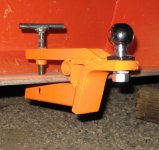shaley
Platinum Member
I think people are mixing terms. When a mig welder says flux core or gas it means it will weld with wire that has a core of flux so shielding gas is not needed or solid wire with a gas shield. Some MIGs (metal inert gas) units are not set up for gas flow (timed pre and post purge and valves etc). There are gasoline powered welders. Good for mobile jobs. TIG welders are (Tungsten Inert Gas) and use a tungsten tip and an inert gas (Helium Argon) shield over the arc. Good for welding Alum. on AC and Stainless on DC and small parts and intricate welds.
What we call Stick is GMAW Gas metal arc welding and the flux covered rod produces the shielding gas. Stick welders can be AC and if you pay more AC/DC. Heliarc is actually a trade name for TIG back when they used helium gas for Aluminum.
I would recommend a AC/DC stick machine or a wire feed MIG unit that is capable of adding gas in case of welding Aluminum or Stainless.
DC stick will be the easiest to learn and you will look like a pro in no time because of its stable arc. AC takes a little more attention to joint prep and rod selection. Once again, a good machine with good stable open circuit arc voltage will help. 110 volt buzz boxes are not the ticket here.
What we call Stick is GMAW Gas metal arc welding and the flux covered rod produces the shielding gas. Stick welders can be AC and if you pay more AC/DC. Heliarc is actually a trade name for TIG back when they used helium gas for Aluminum.
I would recommend a AC/DC stick machine or a wire feed MIG unit that is capable of adding gas in case of welding Aluminum or Stainless.
DC stick will be the easiest to learn and you will look like a pro in no time because of its stable arc. AC takes a little more attention to joint prep and rod selection. Once again, a good machine with good stable open circuit arc voltage will help. 110 volt buzz boxes are not the ticket here.
